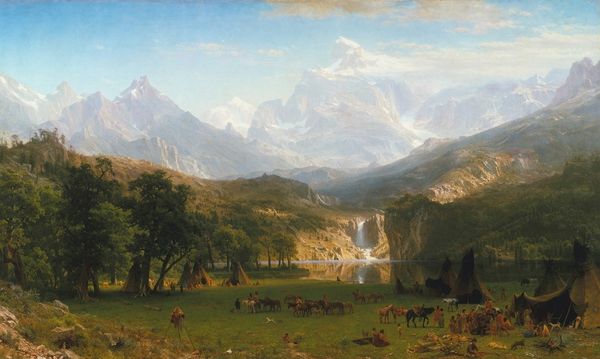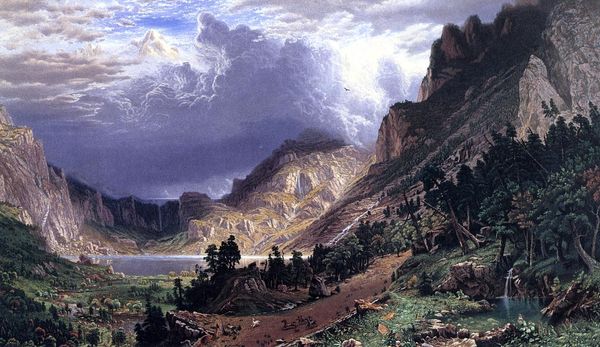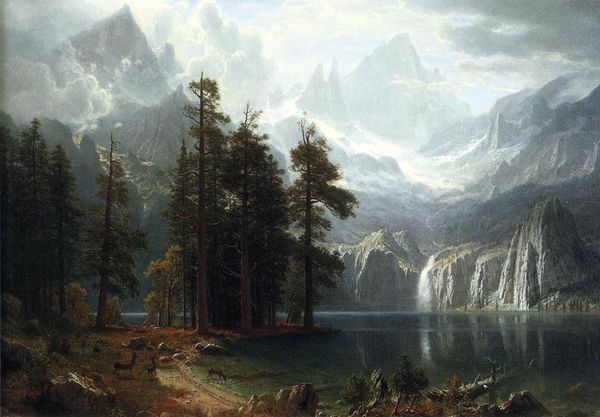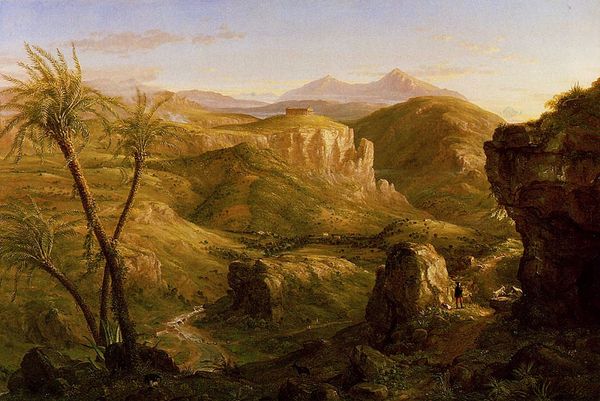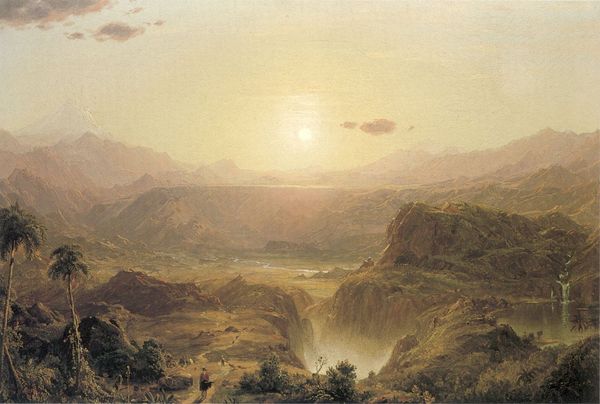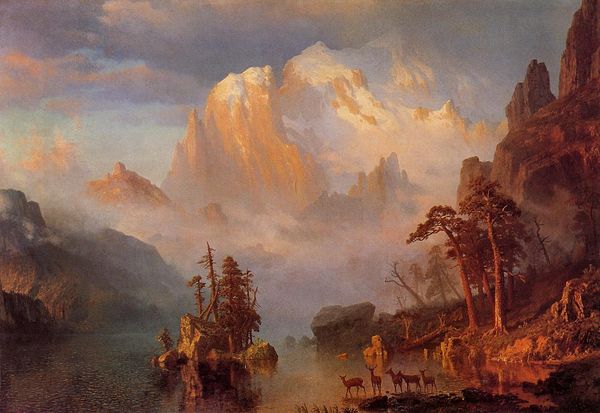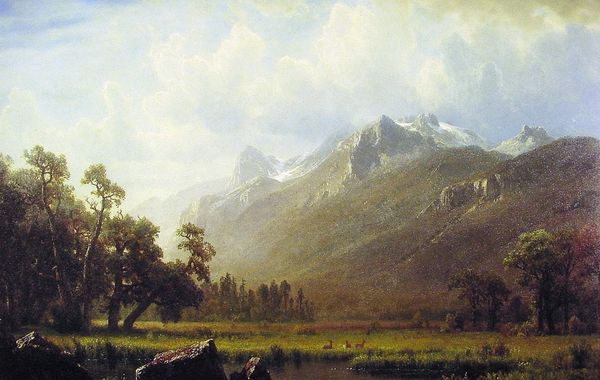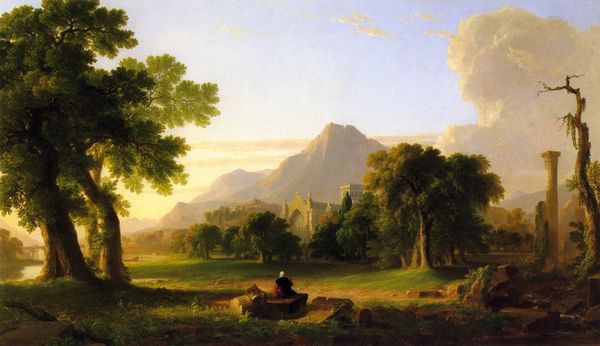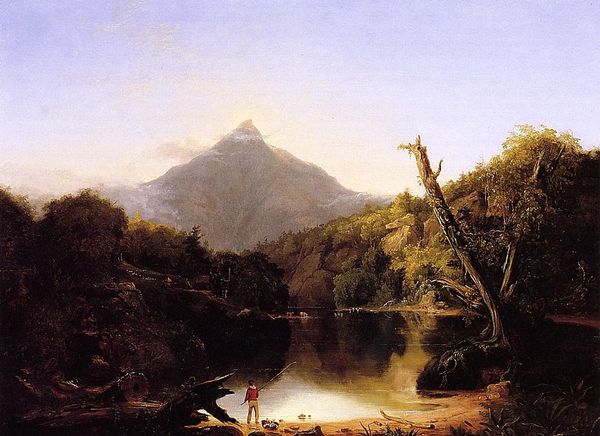
Dimensions: 53.82 x 87.79 cm
Copyright: Public domain
Editor: So, this is "The Rocky Mountains, Lander's Peak" painted by Albert Bierstadt in 1869, with oil paint. The vastness and light in this landscape is immediately striking; how should we read this artwork? Curator: It's about memory. Look how Bierstadt frames the scene. The mountains are more than just geological forms; they're vessels. Notice the camp scene in the lower register of the painting, which contrasts human presence with timeless nature. What stories do you think that juxtaposition implies? Editor: I suppose it could symbolize humankind's temporary existence relative to nature. A reminder of how small we are? Curator: Perhaps, but consider also that Bierstadt deliberately places this indigenous encampment. The image isn't just of mountains; it’s of a place already inhabited, rich with cultural significance erased by manifest destiny. Do you recognize how it romanticizes the landscape while subtly acknowledging an uncomfortable truth? Editor: It’s almost a memorial... a cultural record disguised as pristine landscape? It carries both the awe of exploration, but it seems like Bierstadt may have captured it on the cusp of inevitable transformation. The light almost feels like a warning. Curator: Indeed, the light, so central to the Hudson River School, symbolizes divine presence, but what does it mean when that presence shines upon dispossession? Bierstadt encourages you to wrestle with how an image can evoke multiple meanings. What’s most striking to you now? Editor: Thinking about it, there’s an invitation to look beyond the aesthetic, beyond pretty mountains and shimmering light. I’m now seeing a visual encoding of complicated cultural history within this serene vista. Thank you! Curator: My pleasure, the surface can conceal but also reveal. That push and pull makes art endlessly engaging!
Comments
No comments
Be the first to comment and join the conversation on the ultimate creative platform.
